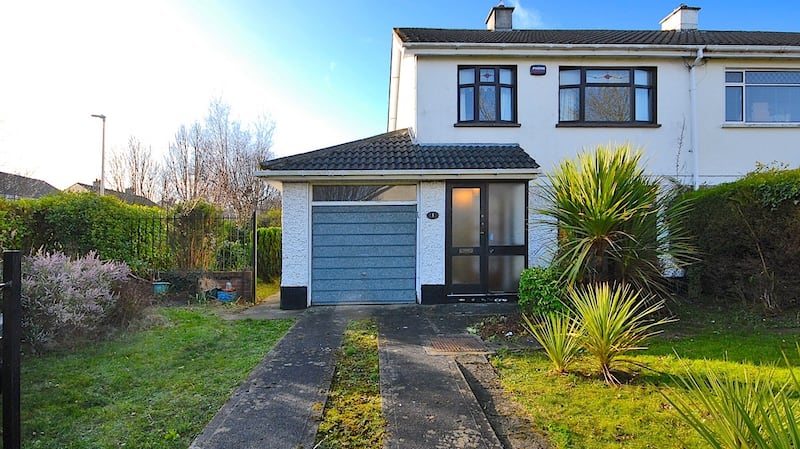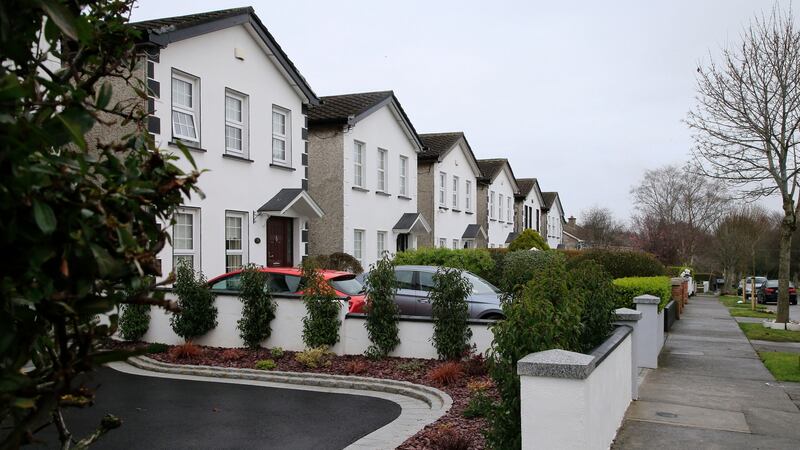Blanchardstown's history stretches back to its inclusion in the Barony of Castleknock, which stretched from Cabra out as far west as Clonee in Co Meath, south as far as the Liffey and north as far as North Road, with the name of the town deriving from the Blanchard family, who were given this plot of land in northwest Dublin by Sir Richard Tyrrell.
When the Norman settlers inherited the land it would have been mostly vast swathes of woodland, which were cleared to make way for tillage land, with the area primed for agriculture by the late 1700s.
However, Blanchardstown remained a small rural village until the 1900s, at which point Dublin’s sprawl outwards began to change the area, especially with growth periods in the 1940s and 1970. Then a major growth period in the boom years changed the area into a self-contained town that offers as wide a range of amenities as anywhere else in Dublin.
"All the farms of the area have now become housing estates or industrial parks essentially," says Declan Baxter, owner of Baxter Real Estate. "Blanchardstown and Castleknock would have been the two main villages, with the greater area extending into Tyrrelstown, Ashtown, Ongar and Hollystown since the Celtic Tiger covering a huge area."
Despite its amenities and close proximity to the city centre via the Navan Road, Blanchardstown has maintained a competitive price in the property market that makes it much more affordable than neighbouring Castleknock, Yet it offers all of the same, if not more, local amenities.
What housing stock is available?
Parts of Blanchardstown are still relatively affordable in comparison to many other parts of Dublin. In Castlecurragh Heath, for example, an area that borders Mulhuddart, a one-bed apartment has bids starting at €134,950. In the same estate a three-bed, two-bathroom terraced house is currently asking €224,950. Close by in Warrenstown a three-bed, two-bathroom house is asking €260,000.
In Whitestown Walk, a housing estate that outwardly looks low on frills but is very close to Blanchardstown Shopping Centre, an end-of-terrace two-bed has an asking price of €195,000, while a three-bed at Whitestown Gardens is likely to break the €200,000 mark.
A jump up the ladder will get a two-bed, duplex apartment for €250,000 at Bantry Square in the large Waterville development not far from Connolly Hospital.
In the €300,000 range there is a number of high-quality, three-bed homes available across a range of locations, including the mature Springlawn Drive, Summerfield Rise and Orchard Grove, all close to Castleknock, with prices ranging from €375,000 to €395,000.
For an extra slice, up to €475,000, one can buy a four-bed detached mock Georgian in Rushbrook close to Blanchardstown village, or at the top of the current market a four-bed on the Cappagh Road for €675,000.

Any new developments for sale?
Hansfield is being sold through Sherry FitzGerald New Homes – a large development that has brought over 400 three- and four-bed homes to the market in the last two years. The final phases are under way, with prices starting below €300,000 and now up at €350,000, says Julian Cotter, of Sherry FitzGerald's Castleknock office.
"Fairhaven consists of three-bed, semi-detached homes in the €515,000 price range. Fottrell Hall has five-bed, semi- and detached homes with a price tag of €1.05 million. Hamilton Park is three- and four-bed semis and is priced at €520,000. There is also a site on the Clonsilla Road, consisting of 18, three-bed, semi-detached homes that will be launching soon," says Andrew Rafter, director with Flynn & Associates.
Getting there
Blanch is located on a parcel of land just outside the M50, to the west of Castleknock, and the south of the junction of the N3 and Navan Road at the M50, opening up both an artery to the city centre and an almost immediate turnpike to the ring road.
The 39 bus route serves the city, a well-known and highly used service, but with a significant journey time for those travelling into the city centre during peak hours, However, an Arrow train runs nearby at Castleknock, Coolmine and Clonsilla, while the 38 bus runs from Blanchardstown through O'Connell Street and on to Burlington Road. The 17A orbital route leaves from Blanchardstown centre and runs through Connolly Hospital, Finglas village, Ballymun and Beaumont Hospital to Kilbarrack.
It has to be said that the Navan Road and N3 are extremely busy, and an often overloaded artery into the city. A direct rail line, most likely a Metro West service, would be a very welcome addition for commuters.
Village life
The main street of Blanchardstown is thriving with what appears to be a 100 per cent occupancy rate or very close to it. Many Dublin towns are let down by village life and a vibrant business life to go with it: not so Blanch. The main street has lots going on: a number of well-regarded eateries in the form of Browne’s Steakhouse, Cottage Café and Maximilians Bistro and Wine Bar; a number of bars, including the Black Wolf and the Twelfth Lock which top the list of the best watering holes; and there are a number of shops and convenience stores dotted across the main street.

In addition, a little further west of the town is the Blanchardstown Shopping Centre, a vast shopping complex with many of the high-street brands, surrounded by a number of busy retail parks. As well as offering a vast variety of shopping options for the local area and wider catchment area, it has a multiplex cinema, a Leisureplex, the Draíocht Theatre, pubs and restaurants.
Green space and sports
Like the village, Blanch is superbly well served by the amenities surrounding the town, but many are a short drive from the area. These include Luttrellstown Castle and its grounds, as well as the Royal Canal towpath walking route. Dublin's green lung, the Phoenix Park, is located just adjacent, with Farmleigh – the official Irish State guesthouse – and its food market located within the park's borders.
Castleknock Golf Club, St Brigids GAA on the Navan Road and a host of soccer clubs form major social communities in and near the town. The National Sports Campus is located in Abbotstown, and includes a wide variety of facilities, including the National Aquatic Centre, the GAA National Games Development Centre, the FAI National Training Centre, land reserved for the IRFU, along with a number of multisports pitches and other sporting facilities.
The protected green-belt zone of Strawberry Beds, running along by the Liffey, is another wonderful area within striking distance, with “shuttle buses running down to the old-style pub Strawberry Hall”, says Rafter.
A short drive west brings one to the rural attractions of Meath.
Of all the Dublin towns outside the M50, this one has one of the better mixes of amenities both in the town and in the surrounding areas.

Integrated living
Since the boom Blanchardstown has developed a reputation as being one of the more multicultural Dublin towns. The 2011 census listed the non-national population at 23.5 per cent, with 4,448 locals from Poland, 5,678 from the rest of the EU and 9,393 locals from the rest of the world. The many industrial estates in the surrounding areas have contributed to this multiculturalism as the Celtic Phoenix brings more foreign nationals to Dublin 15. Multinationals in the area, such as the eBay office, continue to offer jobs at blue-chip firms, which offer salaries that bring in a well-educated workforce.
For sale
- Three-bed, two-bath semi-detached at 13 Springlawn Drive, €395,000. Agent: Flynn & Associates
- Three-bed, one-bath, semi-detached at 1 Orchard Grove, €395,000. Agent: Baxter.
- Four-bed, two-bath detached at 37 Rushbrook, €475,000. Agent: Sherry FitzGerald.
For rent
- Two-bed, two-bath apartment at Verdemont, €1,600 per month. Agent: Ray Cooke.
- Two-bed, two-bath apartment at Grove Court, €1,750 per month. Agent: Lloyd Daly.
- Three-bed, one-bath, semi-detached at Ashling Heights, €1,800 per month. Agent: Olivers.












